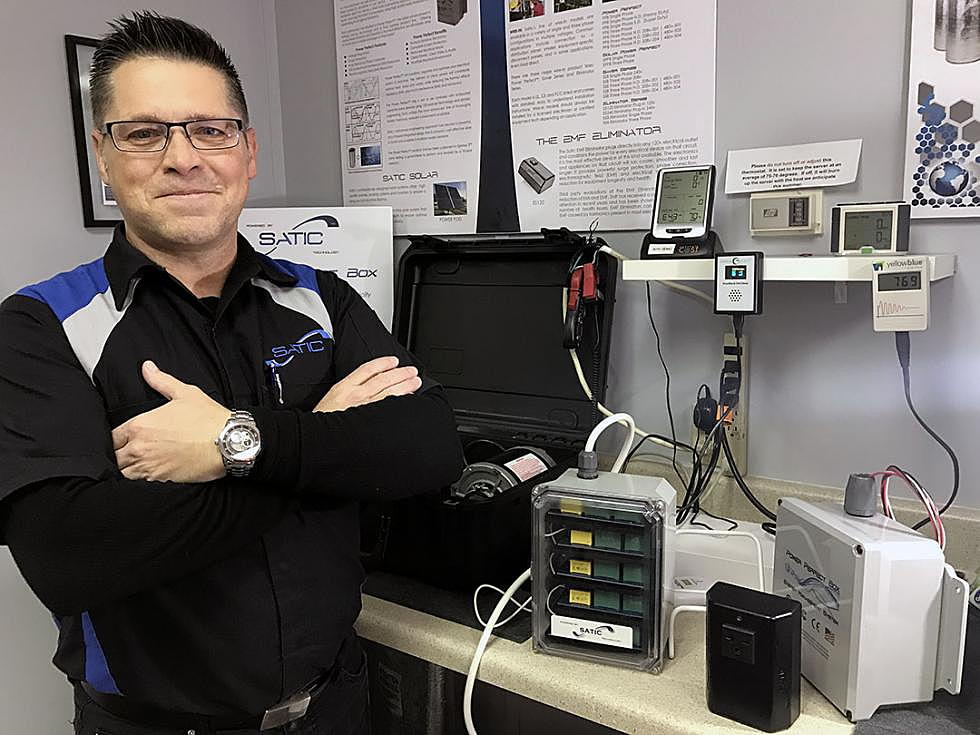
Missoula’s Satic Technologies sees growth opportunities in solar
A technology company based in a nondescript building west of Missoula has found itself on the forefront of a green energy future, manufacturing a line of “Power Perfect” products suited for both home and industrial settings.
Satic Technology, founded by BD Erickson, has also pledged an American-made approach to its product line, opting for wire harnesses made at S&K Technologies in Ronan and junction boxes molded by Diversified Plastics in Missoula.
“We're engineers and American manufacturers of go-green energy products,” Erickson said. “A lot of guys talk about American manufacturing, creating jobs, building something that serves the greater good or that can truly reduce the impact on the planet. We generally feel we deliver on that.”
With its team of engineers, Satic is using a new twist on existing technology to save energy, from shields that block 97 percent of radiant heat to self-contained solar pods. Its Satic Pulse LED light bulb uses just 9 watts of energy for a 60-watt equivalent lamp.
But while space-age thermal insulation, LED lights and solar panels are easy enough to understand, the company's harmonic filters and EMF eliminators – both of which scrub dirty electricity from the power grid – don't necessarily translate into layman terms, though sales of the devices are on the rise.
“Dirty electricity is like paying for foam on top of your beer,” said Erickson. “It's not what you want. It's an unwanted side effect of dirty electricity that's full of surges and spikes, and it makes equipment and motors run hot and wear out faster.”
While Erickson talks about electromagnetic interference, AMPs and harmonics, his product demonstrations are more to the point. A small air-conditioning motor, for instance, runs hot and labored under the dirty electricity that powers his office building.
But when a small EMF filter is plugged into a wall socket, the power feeding the motor drops to a fraction of what it was, though the motor continues to run. In other words, Erickson said, the filter is regulating the electrical system in real time by coaxing the electrical waves to move in synergy.
“It's simple science that when you increase the quality of the electricity and remove the foam from the top of the beer that you'll need less of it, and when you need less, your bill goes down over time and your equipment lasts longer,” said Erickson. “This cleans the electricity so less of it is converted into heat.”
The EMF Eliminator and Power Perfect Box, both of which are manufactured on site and have sold more than 6,000 units thus far, filter dirty electricity and reduce waste. The latter remains the driving force behind Satic's mantra, which aims to “Power Tomorrow's Change.”
It's that go-green mentality that has given Satic a running start in an emerging industry.
“At no time in American history have more people wanted to save money and help our planet, but most feel they don't have the tools,” Erickson said. “Our products address both of those things directly.”
Erickson considered the business years ago while in Hawaii, where he sold efficient lighting manufactured in Asia to buyers in the Middle East, where the cost of electricity was high. Many suggested such energy efficient lighting had no market in the U.S., given its low energy costs, though Erickson disagreed.
“The components that made the lighting so efficient was a blatant NASA ripoff,” Erickson said. “But once NASA declassifies something, we're free to repurpose that. I figured if we can do it to lights, why not try and do it to other things too. It really evolved into a product that tries to get the most out of every single piece of equipment.”
But getting Satic off the ground wasn't easy. As Erickson describes it, they had to invent and build their product, which took money they didn't have. They also had to certify their products, which again took funding that wasn't easy to come by.
When the Home Shopping Network and Costco agreed to carry their products, they spent more money on testing to ensure the instruments did what they claimed they would do.
“We weathered all that stuff on our own, selling as it went,” Erickson said. “It has taken six or seven years, and I don't know if I'd do it again if we had to start over. It's been immeasurably hard, but we did it and now it's time to scale.”
The company's timing may now play in its favor, if data from the Solar Energy Industries Association is any indication. The industry has seen rapid growth, installing 39 percent of all new electric generating capacity nationally in 2016.
With the cost to install solar dropping more than 70 percent since 2010, solar has captured more of the nation's total electrical generation, rising from just .1 percent in 2010 to more than 1.4 percent today. By 2020, the industry projects that solar will account for 3 percent of total generation, and 5 percent by 2022.
As Erickson sees it, the solar industry includes three products – the panels, the rack system and the inverter. But two more sub systems are coming on strong, including better batteries and the power conditioners manufactured by Satic.
“We believe we have a whole other subset of systems that will potentially go with every solar system, and we're way out front on that,” Erickson said. “If you're going to go solar, this is an essential part of the system.”
